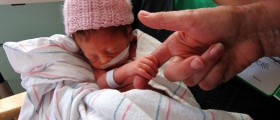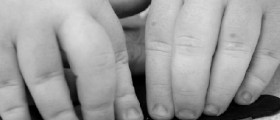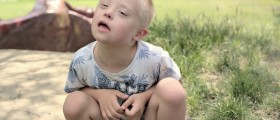
Development with Down Syndrome
Down syndrome is the most prevalent genetic disorder diagnosed right at birth. Numerous research studies have attempted to gain better understanding of the causes of the syndrome as well as possible therapeutic methods and their effects through clinical trials. It is generally accepted that Down syndrome is caused by additional genetic material from the chromosome 21 or by one whole extra chromosome 21. The disorder is autosomal recessive and is characterized by physical and mental developmental delays. When it comes to the physical development in general, it gradually evolves through the first years of life, with the brain having full control and making movement acquisition seem fairly effortless. However, infants with Down syndrome do not reach early developmental milestones, such as rolling, grasping, standing, and walking, on time. It is challenging to predict at birth the course of development of each child with Down syndrome for every individual is unique and different. Some affected persons develop at the same time as their general public counterparts while others have profound difficulties. It should be noted that most Down syndrome children are only delayed in developing basic motor skills, i.e. they will catch up with their peers at some point. Further, their movements may sometimes appear awkward but nevertheless they are sufficient for performing everyday tasks. Motor skills can be divided into two categories including basic and recreational, employment, or specialist motor skills. Basic skills are those necessary for functioning on a daily basis, such as holding a spoon or tying a shoe lace. Recreational, employment, or specialist skills are more advanced and are related to the individuals’ personal interests and aptitudes. For example, such skills include anything from throwing and catching to riding a bicycle or playing a musical instrument. The former are acquired relatively effortlessly while the latter are taught by teachers and coaches. What is more, the development of motor skills is not only required for their practicality, but because they directly influence cognitive and social progress as well. For instance, being able to reach and grasp an object allows the child to explore elements present in his or her world. Also, sitting permits a child to use hands more often in play. Acquiring basic mobility skills allows the child to move around, interact socially with visitors in the house, and learn a language, and so on. Finally, being able to jump, run, or play soccer provides more opportunity for engaging in leisure activities with friends. As is the case with any kind of development, it is important to be given opportunity to reach full potential no matter how limited or vast the potential might be. With proper care and training, children and adults with Down syndrome can improve their skills and reach high levels of competency in activities ranging from making coffee or tea to playing recreational sports. Notwithstanding, individuals with Down syndrome do have lower muscle tone compared to non-Down syndrome persons, and in many cases may not be given the opportunity to learn new motor skills. Such stigma provides little help to Down syndrome persons, and probably does not play as strong a role as does opportunity created by the environment to improve.Hyperactivity and Down Syndrome
Attention deficit hyperactivity disorder (ADHD) is a widespread behavioral disorder observed in childhood. The most common signs and symptoms of ADHD include limited attention span, misbehaving or impulse behavior, and non directed motor activity. Characteristics of all psychological disorders are to some extent present in many individuals but do not interfere with daily functioning. Once they start to interfere they become a problem and require attention. ADHD is present in both Down syndrome and non Down syndrome individuals. It should be noted that there are many medical and environmental elements that influence the child’s behavior and make it look like ADHD when in fact it is not. For instance, many persons with Down syndrome have vision and auditory problems making it that much more challenging to pay attention. It is very important to monitor the child’s vision and hearing to make sure that they are satisfactory or to provide adequate treatment. Only when such underlying medical conditions are kept in check can a child exhibiting ADHD like symptoms be diagnosed with the disorder. Further, many individuals with Down syndrome have thyroid problems, mainly hypothyroidism. Hypothyroidism is characterized by fatigue and disinterest. On the other hand, if the thyroid gland is overactive, the child will be restless and agitated. In either case, both conditions can be interpreted as ADHD. As thyroid problems are very often observed in Down syndrome individuals it is important that they be distinguished from otherwise caused behavioral problems. Also, sleep problems are fairly prevalent among the Down syndrome population, including sleep anea, and difficulty breathing during sleep. Sleep disorders can leave the child feeling tired and apathetic, but that does not mean he or she has ADHD.
















Your thoughts on this
Loading...